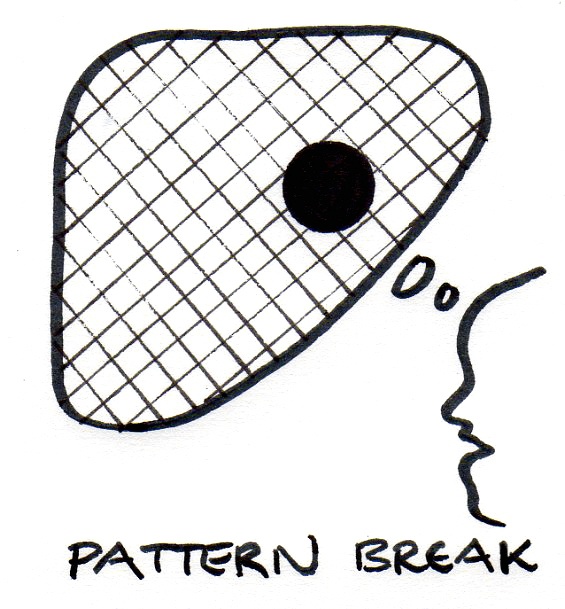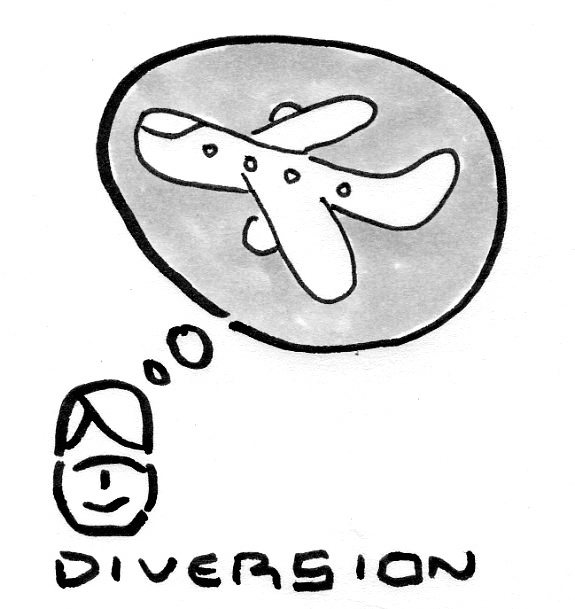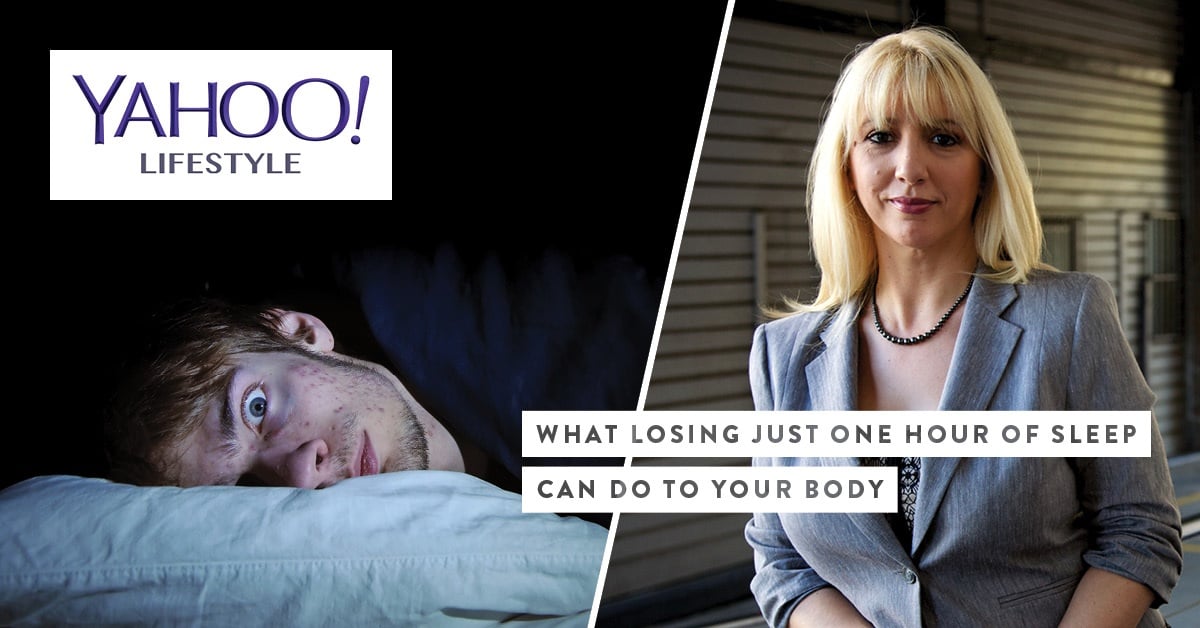Innovation Is Just A Habit
Most of us operate habitually day to day. In our organisations we follow processes, have little rituals and habits about what we think, and what we do. Not all our habits are great, many are good (they help us get where we are) and others are not so good (they stop us from growing and improving). Our negative habits get in the way, when they prevent us from doing something more extraordinary, something more valuable or more innovative.
The key part of the brain that controls our habits is the Basal Ganglia, this little piece of brain machinery is responsible for allowing us to do and make so many of the thousands of decisions we make everyday.
In fact if it wasn’t for the Basal Ganglia, the processing power that our brains would require to process a decision from start to finish every time would be so huge that our heads would be too big to allow us to be born.

The Basal Ganglia allows the brain to utilise previous experiences as a way to shortening our processing required in making decisions. In essence habits make our life easier for our brain and for ourselves.
Innovation is just a series of particular habits, brought together to create some commercial magic at the end of it all. If we can create some awesome innovative habits and maintain them we can make innovating much easier.
Our Challenge Is:
- What are the innovation habits that we want to create?
- Are there any habits I need to eliminate or change that are hampering or preventing my innovation as it stands?
- How do I continue my habits for a long time to come?
- What is it that creates a habit in the first place?
In his awesome book the Power of Habits, author Charles Duhigg takes readers on a journey into the world of habits. After an intense investigation of Habit scientists, Duhigg reveals some of the secrets behind habits.
One Key Take Away Is That A Habit Is Made Up Of:
- a trigger
- a routine
- a reward
- a craving
Say you start your day at the office by checking your emails as soon as you sit down. The trigger may be seeing the computer, the routine might be to log in and check emails, the reward may be the number of emails that you look at and the craving that you are trying to satisfy may actually be trying to get a sense of control in your day to day life.
Negative habits are often continued because of the craving that it satisfies not necessarily the reward. As Duhigg shares, one of his habits was to head to the cafeteria and buy a cookie. By applying a habit awareness process, Duhigg started to capture his thoughts and feelings when this habit came on – what was he feeling? and what was he thinking etcetera.
Part of changing habits (if you feel they are not serving you) is in realising that we can change the reward to satisfy the craving and therefore change the habit. Duhigg tried substituting the biscuit with some fruit. Was he craving the sweet sugar hit? The fruit didn’t satisfy him, perhaps it was something else?
What Duhigg realised was that he was really craving the social interaction of the cafeteria. So rather than head to the cafeteria where he was likely to buy the cookie, he instead went for a wander up the corridor to see if a colleague’s door was open and have a quick chat. Craving satisfied and a new habit created.

The Point To This Story About Habits Is Twofold:
First go and buy the book it’s a great read and second, we need to be vigilant about bad habits that prevent us from innovating & replace them with new habits. Here’s five quick routines or processes to start to get an innovation habit happening. Try doing one habit once a day, that way you can do 5 of them a week.
- Ask yourself if you could reinvent the way you work differently by starting from scratch. What would you do to make your work easier? – this could be making something faster, slower, simpler and so on?
- Scan a part of the world for something that catches your eye or your imagination – the further afield it is, the better it will be. If you’re in the world of finance explore the world romance, if you work in digital, explore the world of handcrafts. If you see an idea imagine you have to incorporate the key attributes of the idea into your world. What would that look like and how would it work?
- Map a part of a process that you do in your day to day work. Identify the steps that make up the process. You could think of it as a series of check lists, or a mind map of how all the elements relate to it.
- Look at a map of the processes you have mapped before and force yourself to improve some of the steps. Start small and stay specific, how could you improve it?
- What’s something that your client or team dislike about what you do in your work? What could you do to make working with your service, process or product the best experience imaginable? Now, how can you make it happen?
So what’s the craving that you’re looking for? Relieving boredom? A sense of excitement of doing something no one has done before? A challenge, a puzzle? A sense of pride? Recognition?
Some our habits, such as playing in the footy tipping competition, while might be fun may not be that innovative, but it satisfies the craving of fun, and a sense of competition in a simple game with simple rules.
We can do the same by creating a gaming environment around the innovation we create, with clear rules, objectives and a way of measuring ones progress with constant feedback.
Is it the number of ideas created per week? Number of new ideas or initiatives implemented in a quarter? Number of projects completed? The rules are up to you as are the opportunities.
Start your new innovation habit today.
- i4 Neuroleader (353)
- Leadership & Culture (325)
- Brain Health & Wellbeing (202)
- Innovation (97)
- Performance (85)
- Our News (80)
- Collaboration (68)
- Agility (53)
- Practitioner Stories (44)
- In The Press (36)
- Make Me A Leader (33)
- Balance (31)
- Integration (30)
- Imagination (29)
- Awareness (23)
- Brain-Friendly Channel (22)
- Communication (22)
- Curiosity (21)
- Inspiration (19)
- Intuition (19)
- Attitude (17)
- Courage (16)
- Adaptability (14)
- Case Studies (14)
- Drive (14)
- Generosity (13)
- Brain-Friendly Leadership (11)
- Ethics (9)
- Mental Readiness (9)
- Influence (8)
- Retreat (6)
- Brain-Friendly Leadership (1)
- Oracle Cards (1)
- 1 April 2025 (1)
- 1 March 2025 (9)
- 1 February 2025 (3)
- 1 September 2024 (4)
- 1 July 2024 (2)
- 1 June 2024 (6)
- 1 May 2024 (2)
- 1 April 2024 (3)
- 1 March 2024 (1)
- 1 November 2023 (1)
- 1 August 2023 (1)
- 1 July 2023 (2)
- 1 June 2023 (2)
- 1 May 2023 (4)
- 1 April 2023 (2)
- 1 March 2023 (7)
- 1 February 2023 (4)
- 1 January 2023 (1)
- 1 September 2022 (1)
- 1 May 2022 (3)
- 1 April 2022 (1)
- 1 March 2022 (5)
- 1 February 2022 (4)
- 1 January 2022 (4)
- 1 December 2021 (2)
- 1 November 2021 (4)
- 1 October 2021 (3)
- 1 September 2021 (6)
- 1 August 2021 (1)
- 1 April 2021 (1)
- 1 December 2020 (2)
- 1 November 2020 (1)
- 1 September 2020 (1)
- 1 August 2020 (1)
- 1 July 2020 (3)
- 1 June 2020 (4)
- 1 May 2020 (3)
- 1 April 2020 (4)
- 1 March 2020 (6)
- 1 February 2020 (4)
- 1 January 2020 (2)
- 1 December 2019 (3)
- 1 November 2019 (3)
- 1 October 2019 (5)
- 1 September 2019 (4)
- 1 August 2019 (4)
- 1 July 2019 (4)
- 1 June 2019 (5)
- 1 May 2019 (9)
- 1 April 2019 (9)
- 1 March 2019 (8)
- 1 February 2019 (7)
- 1 January 2019 (8)
- 1 December 2018 (5)
- 1 November 2018 (10)
- 1 October 2018 (16)
- 1 September 2018 (9)
- 1 August 2018 (10)
- 1 July 2018 (9)
- 1 June 2018 (8)
- 1 May 2018 (9)
- 1 April 2018 (9)
- 1 March 2018 (9)
- 1 February 2018 (8)
- 1 January 2018 (8)
- 1 December 2017 (6)
- 1 November 2017 (9)
- 1 October 2017 (9)
- 1 September 2017 (8)
- 1 August 2017 (10)
- 1 July 2017 (8)
- 1 June 2017 (8)
- 1 May 2017 (9)
- 1 April 2017 (8)
- 1 March 2017 (6)
- 1 January 2017 (3)
- 1 December 2016 (4)
- 1 November 2016 (5)
- 1 October 2016 (4)
- 1 September 2016 (2)
- 1 August 2016 (4)
- 1 July 2016 (4)
- 1 June 2016 (2)
- 1 May 2016 (3)
- 1 April 2016 (3)
- 1 March 2016 (7)
- 1 February 2016 (2)
- 1 January 2016 (5)
- 1 December 2015 (2)
- 1 November 2015 (2)
- 1 October 2015 (4)
- 1 September 2015 (2)
- 1 August 2015 (2)
- 1 July 2015 (1)
- 1 June 2015 (3)
- 1 May 2015 (4)
- 1 April 2015 (5)
- 1 March 2015 (3)
- 1 February 2015 (3)
- 1 January 2015 (3)
- 1 December 2014 (3)
- 1 November 2014 (3)
- 1 October 2014 (3)
- 1 September 2014 (5)
- 1 August 2014 (4)
- 1 July 2014 (5)
- 1 June 2014 (3)
- 1 May 2014 (1)
- 1 March 2014 (1)
- 1 December 2013 (2)
- 1 November 2013 (1)
- 1 July 2013 (1)
- 1 June 2013 (1)
- 1 May 2013 (3)
- 1 April 2013 (1)
- 1 March 2013 (2)
- 1 February 2013 (1)
- 1 January 2013 (2)
- 1 November 2012 (1)
- 1 October 2012 (1)
- 1 September 2012 (1)
- 1 August 2012 (2)
- 1 July 2012 (1)
- 1 June 2012 (1)
- 1 May 2012 (2)
- 1 April 2012 (1)
- 1 February 2012 (1)
- 1 January 2012 (1)
- 1 November 2011 (1)
- 1 October 2011 (3)
- 1 September 2011 (2)
- 1 July 2011 (1)
- 1 June 2011 (1)
- 1 May 2011 (1)
- 1 April 2011 (1)
- 1 March 2011 (1)
- 1 February 2011 (2)
- 1 January 2011 (4)
- 1 December 2010 (4)
- 1 November 2010 (3)
- 1 October 2010 (5)
- 1 September 2010 (4)
- 1 August 2010 (4)
- 1 July 2010 (3)
- 1 June 2010 (4)
- 1 May 2010 (7)
- 1 April 2010 (5)
Subscribe by email
You May Also Like
These Related Stories

STOP! Are You Drowning In The Digital World?

Are Leaders Born Or Made?



No Comments Yet
Let us know what you think